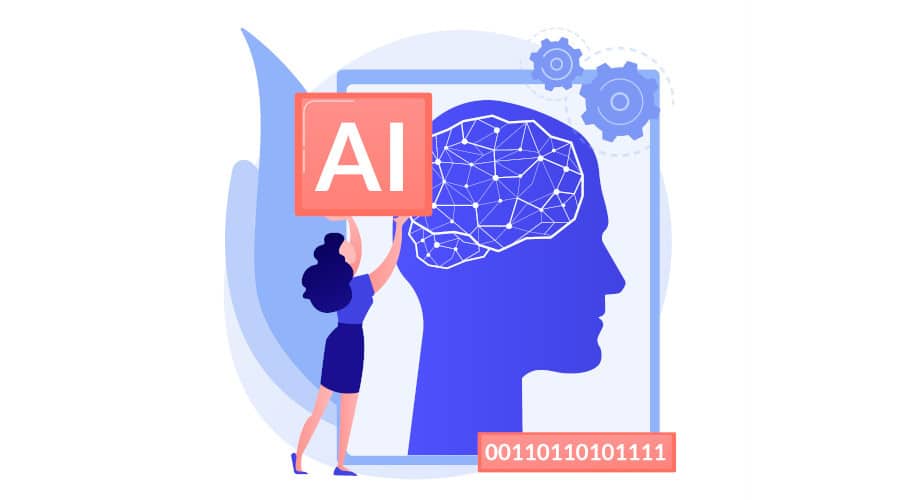ReCall is a Machine Learning approach designed to maximize a model's sensitivity, even at the expense of its specificity. The aim? To avoid any risk of false negatives when making a prediction. Find out all you need to know about this technique!
In recent years, Machine Learning has established itself as one of the major revolutions in the digital world.
By enabling computer systems to learn and improve without being manually programmed, machine learning opens up a myriad of new possibilities.
Thanks to the progress made, its applications have been extended to a wide range of sectors, from healthcare to finance and scientific research.
However, to guarantee the relevance and effectiveness of a Machine Learning system, the quality of predictions is crucial. In certain situations, a false negative can have serious consequences.
For example, in the healthcare sector, an erroneous diagnosis can endanger a patient’s life. Similarly, a fraud detection system that ignores a fraudulent transaction can result in colossal financial losses.
To minimize these potentially catastrophic predictive errors, an innovative approach has been developed: reCALL.
What is ReCALL?
Whereas traditional algorithms aim to maximize prediction accuracy, ReCALL focuses on improving the “sensitivity” of the Machine Learning model: its ability to correctly identify positive hits.
The aim is no longer to achieve a balance between specificity and sensitivity, as usual, but to maximize this characteristic at all costs.
In other words, ReCALL prioritizes the correct detection of positive cases, even if this means tolerating an increase in false positives. This eliminates the risk of false negatives, i.e. cases where positive events are misclassified.
By way of comparison, support vector machines (SVMs) and classical neural networks are generally trained using balanced cost functions for positive and negative classes. This can reduce their sensitivity.
ReCALL, on the other hand, relies on class rebalancing approaches or semi-supervised learning methods to improve the model’s ability to detect rare or important positive events.
By adjusting decision thresholds, it achieves high levels of sensitivity while maintaining acceptable specificity.

How does it work? The ReCALL process
As with any Machine Learning task, data collection and preparation play an essential role in the ReCALL process. To improve model sensitivity, training datasets must contain representative positive and negative cases.
In some cases, positive occurrences may be rare. The next step is to select the most appropriate Machine Learning model to optimize sensitivity. Some algorithms are better suited to this task.
For example, probabilistic classifiers such as logistic regression have a very useful ability to produce probability scores for classes. This facilitates the setting of decision thresholds.
Random forests or XGBoost can also be used, which can be configured to give more weight to Type II errors (false negatives) than to Type I errors (false positives).
Once the data have been prepared and the model selected, training of the model in ReCALL can begin. An iterative process of experimentation can begin to find the right sensitivity/specificity balance by adjusting thresholds or modifying hyperparameters.
Cross-validation techniques can also be used to evaluate the model’s performance on independent test data sets, guaranteeing good generalization to new data.
Finally, performance is assessed on the basis of confusion matrices or ROC curves. The aim is to determine its effectiveness in the specific context of its application. Depending on the results obtained, performance can be further optimized.
Advantages and disadvantages
Compared with traditional Machine Learning methods, ReCALL’s main advantage is its ability to maximize the model’s sensitivity to detect rare or critical positive occurrences.
This approach also enables fine-tuning of model performance to the specific needs of each application, by adjusting decision thresholds.
The downside is that it can lead to an increase in false positives. It is therefore best avoided for use cases where this type of error could pose a problem.
Furthermore, the success of this method depends on a balanced dataset, and fine-tuning the decision thresholds may require specific domain knowledge.

What is ReCALL used for?
The ReCALL approach is used in medical image classification, where it can be a valuable asset for the early detection of serious diseases.
For example, in cancer screening, accurate identification of tumors as soon as they appear is essential to ensure effective treatment at the earliest possible stage. Reducing false negatives avoids missed diagnoses.
In e-commerce, ReCALL can be applied to improve product recommendation to customers. It helps target users’ true interests rather than simply avoiding false positives.
A third use case is fraud detection. Banks and financial institutions can use this method to better identify suspicious activity and reduce associated losses.
In the future, its use could spread to other sectors such as manufacturing. In particular, it can be used to detect defects in products at an early stage, in order to resolve quality problems.
In the field of IT security, it can help identify cybersecurity threats and reduce the risk of successful malicious attacks.
Conclusion: ReCALL, an ideal method for avoiding false negatives
By enabling more sensitive detection of positive events, ReCALL can save lives, avoid heavy financial losses and improve the overall security of Machine Learning systems.
In the future, its usefulness could be enhanced by more advanced class rebalancing techniques for datasets that are too unbalanced, or by integrating active learning to intelligently choose which examples to label.
To learn how to master ReCALL and all Machine Learning techniques, you can choose DataScientest.
Our various Data Science training courses include one or more modules dedicated to machine learning.
You’ll learn about classification, regression, dimension reduction and text mining.
You’ll also become an expert in neural networks and learn to handle tools such as scikit-learn, Keras, TensorFlow or PyTorch.
At the end of the course, you’ll be fully equipped to become a Data Analyst, Data Scientist, Data Engineer, ML Engineer or Data Product Manager.
All our courses can be completed by distance learning, and lead to a state-certified diploma and certification from our cloud partners AWS and Microsoft Azure. Discover DataScientest now!

Now you know all about ReCALL. For more information on the same subject, take a look at our complete dossier on neural networks and our dossier on Machine Learning.










